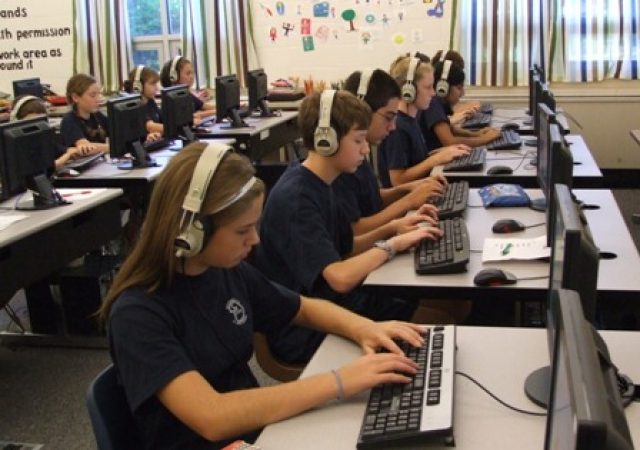When William Levitt first proposed building 17,000 homes on Long Island, he ran into a problem. Existing building codes, first developed in an age of horse-drawn buggies and gas lamps, prohibited the kind of mass production and basement-less homes that could be afforded by the returning GIs they were designed for.
Not until resistant local leaders updated the codes to reflect modern capabilities was Levitt able to build what would become the legendary Levittown, sparking a revolution in home ownership and upward mobility.
It’s a lot like that with full-time online learning in Virginia.
In late April, the Carroll County School Board voted to close Virginia’s largest full-time statewide virtual school, leaving only a small school of 130 students in King and Queen County offering full-time online options to the state’s 1.2 million public school students. The decision leaves 350 students – 13 percent of whom are students with disabilities, 10 percent of whom are from active duty military families, and 10 percent of whom are medically unable to be in a traditional school – out in the cold and scrambling for options next year.
In explaining the school system’s decision, School Superintendent Strader Blankenship cited the complexity of administering government rules to students from more than 70 local school systems, noting “We had more than 350 students in the program, and only five were Carroll County students. We were spending a lot of time on students that were not Carroll County students.”
And therein lies the problem.
Virginia educational governance and funding was designed for a time when students learned in a bricks and mortar building closest to where they lived. They did not anticipate a digital world in which students could live anywhere in the state and learn from anywhere in the state. And online schools for students without borders don’t fit well into a system designed exclusively on local control – it’s like fitting the idiomatic square pegs into round holes.
Basing governance and funding on the local school division model means there will never be a local school system with a vested interest in developing a robust state-wide online presence; indeed, its interest will always run in the opposite direction. The intricacies of education funding means enrolling too many students from outside the county raises local costs to educate “outside” students. Special education students from around the state means dealing with local Individualized Education Plans in each of their residential counties.
And a reliance exclusively on state funding that can range from $2200 to $6800 per child for the sponsoring school division means only a limited number of school systems could even afford to sponsor a full-time virtual school.
The Thomas Jefferson Institute has suggested reforming the funding mechanism (see here) to ensure not only equal funding for any student but also an accountability system basing a portion of funding on successful student course completion. Delegate Richard “Dickie” Bell (R-Staunton) proposed legislation last January (see here) that took elements of the Jefferson Institute proposal and restructured virtual school governance to create a state-wide Virginia State Virtual School, recognizing that an online student is not limited by school division borders.
More than 275,000 students in America are enrolled in full-time virtual schools, a number that is growing 30 percent a year – even as Virginia appears to be slipping into reverse. To be sure, most students who learn online will do so through single courses or through Blended Learning models in which part of their instruction is in a regular classroom. But building healthy full-time virtual schools will provide lessons in curriculum, classroom management and instructional practices that will improve the development of other models.
The age in which we live has fewer and fewer barriers. Online learning tears down the political barriers between school divisions, providing new options for Virginia’s students to learn. These students might be from military families, students on homebound instruction with medical needs, students with special education or gifted needs, or any of a variety of students who would use a virtual school because it fits their requirements better.
Creating a state-wide virtual school model would provide opportunities to those students. It would provide those opportunities without burdening local school divisions. And it would lower the costs of education which once could be delivered only in expensive bricks and mortar buildings.
Virginia’s system of constitutionally-mandated free public education has generally worked well since its creation, but its infrastructure rules weren’t designed for an age of broadband, ipads, and digital learning.
Like the building codes of old, reforming those rules to reflect modern capabilities will spark a revolution in education, expand the ability of the Commonwealth’s students to learn, and ensure their competitiveness in an international marketplace.






